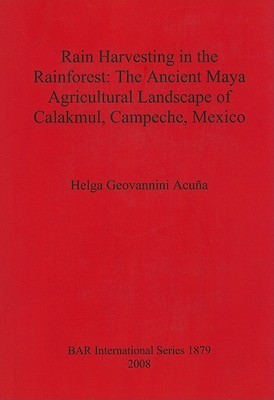
- We will send in 10–14 business days.
- Author: Helga Geovannini Acuña
- Publisher: British Archaeological Reports Oxford Ltd
- ISBN-10: 1407303597
- ISBN-13: 9781407303598
- Format: 20.8 x 29.5 x 1 cm, softcover
- Language: English
- SAVE -10% with code: EXTRA
Reviews
Description
The main subject discussed in this study is the way in which the ancient Maya of Calakmul (modern Mexico), who thrived between 900 B.C. to A.D. 1000, managed their landscape in order to survive in the tropical rainforest. Their lithic technology, the hot, humid climate with a prolonged dry season, the lack of permanent surface sources of fresh water, and thin soils, considered insufficient for sustained agricultural production, are factors that were addressed successfully by the Maya in developing their complex civilization. The author's research begins with landscape, archaeological, and edaphological analyses, after which she explores the areas most advantageous to permanent habitation, suitable agricultural zones, land potential of the region and the capability of the area for supporting population. In addition, a complex agricultural channel irrigation system is explored as a critical factor for managing productive terrain for agriculture in karstic depressions (bajos). Similarly, an impressive rain harvesting system is exposed as an option to optimize hydrological resources for canalizing excessive rain during the wet season and storing water during the dry period. Finally, a reconstruction of the agricultural landscape is proposed.
EXTRA 10 % discount with code: EXTRA
The promotion ends in 17d.06:22:00
The discount code is valid when purchasing from 10 €. Discounts do not stack.
- Author: Helga Geovannini Acuña
- Publisher: British Archaeological Reports Oxford Ltd
- ISBN-10: 1407303597
- ISBN-13: 9781407303598
- Format: 20.8 x 29.5 x 1 cm, softcover
- Language: English English
The main subject discussed in this study is the way in which the ancient Maya of Calakmul (modern Mexico), who thrived between 900 B.C. to A.D. 1000, managed their landscape in order to survive in the tropical rainforest. Their lithic technology, the hot, humid climate with a prolonged dry season, the lack of permanent surface sources of fresh water, and thin soils, considered insufficient for sustained agricultural production, are factors that were addressed successfully by the Maya in developing their complex civilization. The author's research begins with landscape, archaeological, and edaphological analyses, after which she explores the areas most advantageous to permanent habitation, suitable agricultural zones, land potential of the region and the capability of the area for supporting population. In addition, a complex agricultural channel irrigation system is explored as a critical factor for managing productive terrain for agriculture in karstic depressions (bajos). Similarly, an impressive rain harvesting system is exposed as an option to optimize hydrological resources for canalizing excessive rain during the wet season and storing water during the dry period. Finally, a reconstruction of the agricultural landscape is proposed.


Reviews